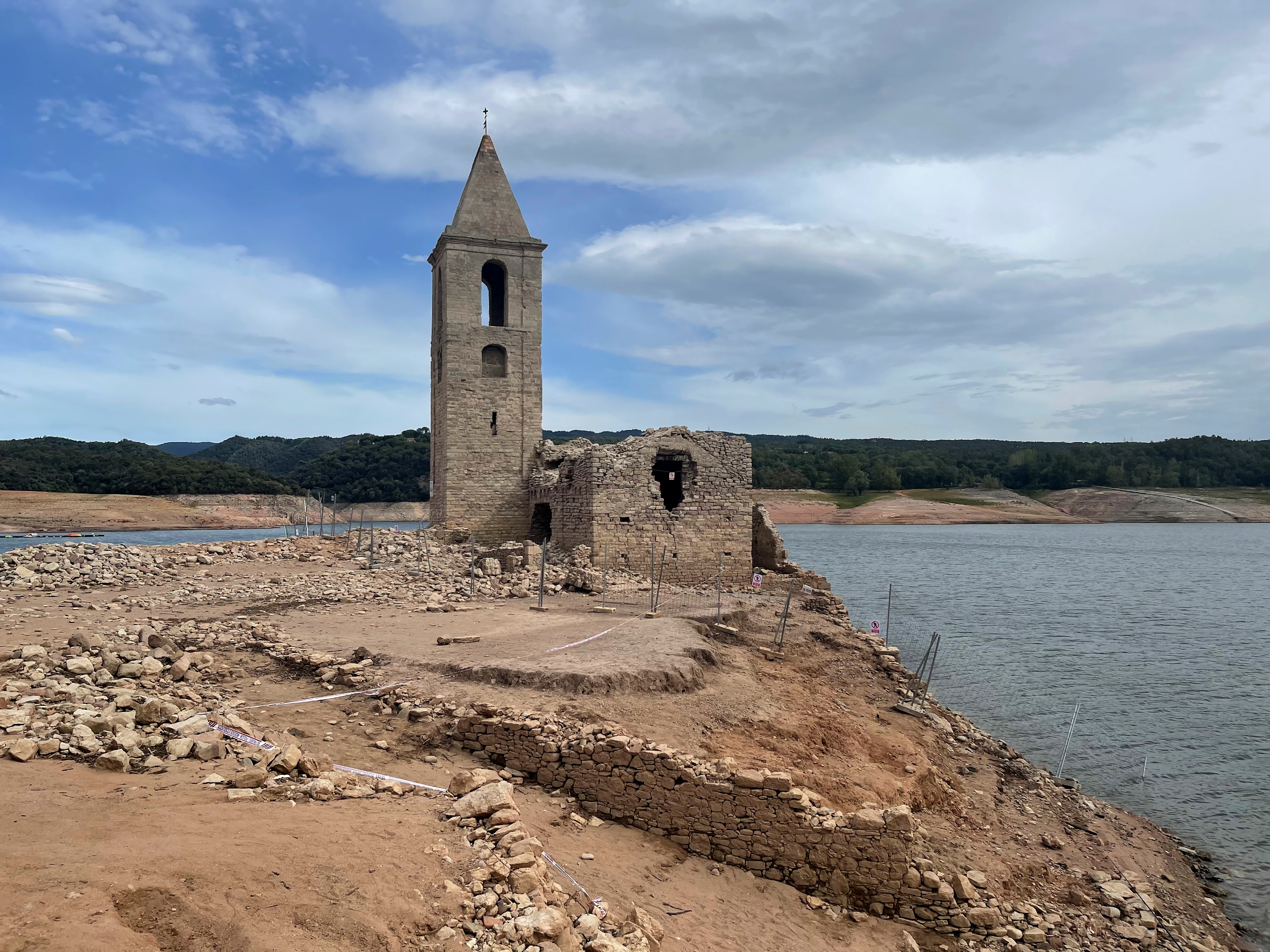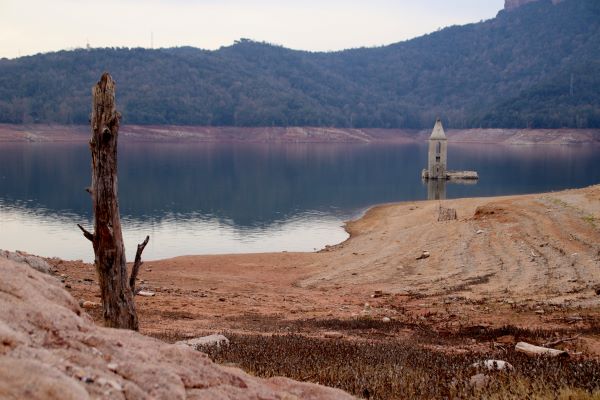The 11th-century sunken church emerging from water due to drought
Town of Sant Romà de Sau was sunken in 1960s to create Sau reservoir, but low reserves bring up eerie relics of the past

This summer, a church unique in the world, located in central Catalonia, has piqued the curiosity of thousands of locals and tourists as it emerged out of the water and became fully visible for the first time in many years.
Normally, this 11th-century Romanesque church of little architectural or historical value apart from its strange location and setting is almost entirely submerged under water.
However, in the summer of 2022, the drought in Catalonia progressively worsened and worsened, to the point that the church is now entirely visible – and for the first time in many people’s memory, even parts of a nearby cemetery and school are also emerging from the water.
These buildings were part of a town that was known as Sant Romà de Sau, which was sunken in the early 1960s to create the Sau reservoir. It was part of a controversial plan that saw various towns across Catalonia and Spain sent beneath the water. Around 150 people lived there in the middle of the 20th century, and Àngel Font is possibly the last resident of the original town alive who still remembers how it looked.
“If we imagine this place without all the water, it was an idyllic place to live,” he tells Catalan News on an excursion down to the banks of the marshy lands to see the Sant Romà church up close. “I might be the only original resident left, and I’ve got records too, I’ve got a photograph in front of the church of when I made my First Communion in 1957.”
 His family, like many others, were forced to leave their homes in the 1960s to make way for the reservoir. The period of moving out of the village was a difficult time for Àngel and the other residents. “The works [to sink the town] lasted around 20 years. Not everybody lived there for the full 20 years at the time, but for around 15 years we lived there while the town was deteriorating,” he explains. “As it was a slow transition and very agonizing, over the course of 20 years people came to terms with the fact that the whole place was going to disappear.”
His family, like many others, were forced to leave their homes in the 1960s to make way for the reservoir. The period of moving out of the village was a difficult time for Àngel and the other residents. “The works [to sink the town] lasted around 20 years. Not everybody lived there for the full 20 years at the time, but for around 15 years we lived there while the town was deteriorating,” he explains. “As it was a slow transition and very agonizing, over the course of 20 years people came to terms with the fact that the whole place was going to disappear.”
While many structures were left to sink, such as the walls of buildings, the more valuable elements of the town were salvaged and auctioned off, he says. “The tiles were some of the most valued things because they were artisanal and are still sought after today. As well as that, portal gates [of the church] and a lot of carved stones” were also sold.
Through the decades, when drought has come and gone, the church has been fully visible on a number of occasions – up to eight times, Àngel believes. But what’s new this year is the fact that parts of the old cemetery are now visible as well, including numerous mausoleum chambers, as well as some walls of Àngel’s old school. “One time, only one time, my old house even emerged from the water,” he says.
The emergence of the Sau reservoir church has piqued the curiosity of many locals and tourists attracted to the eerie relic of a past world still standing in remarkably good condition.
During the height of the summer period, hundreds of cars made their way to this normally quiet spot to gaze at the historic structure found in such a strange setting. So many people arrived, in fact, that local authorities had to restrict access to the marshy lands to ensure damage is not done.


